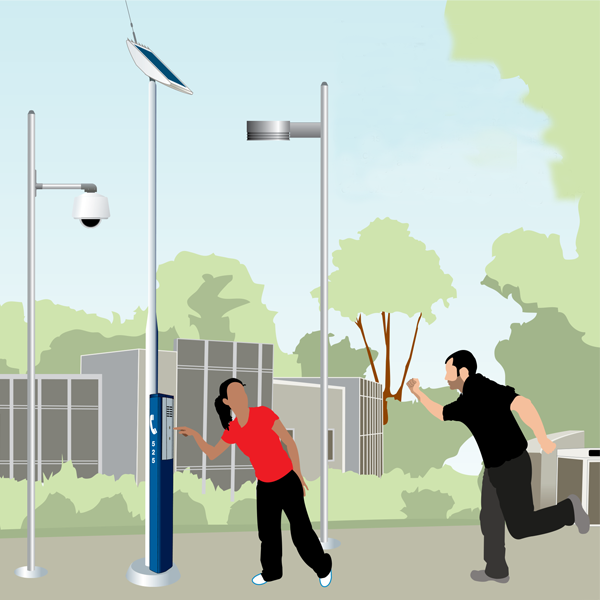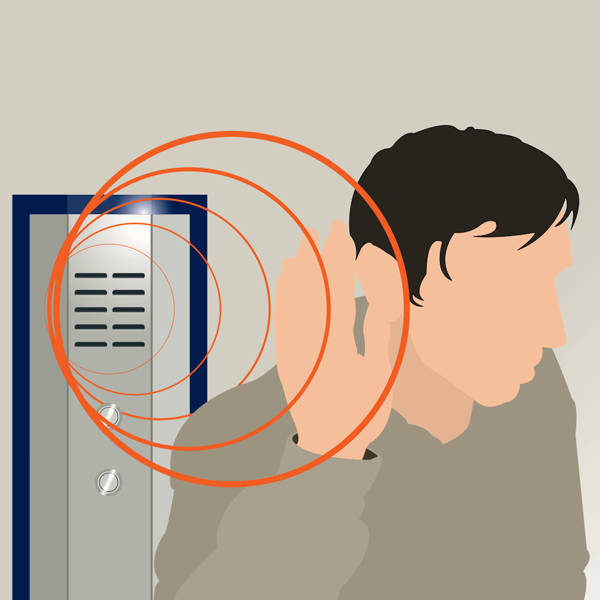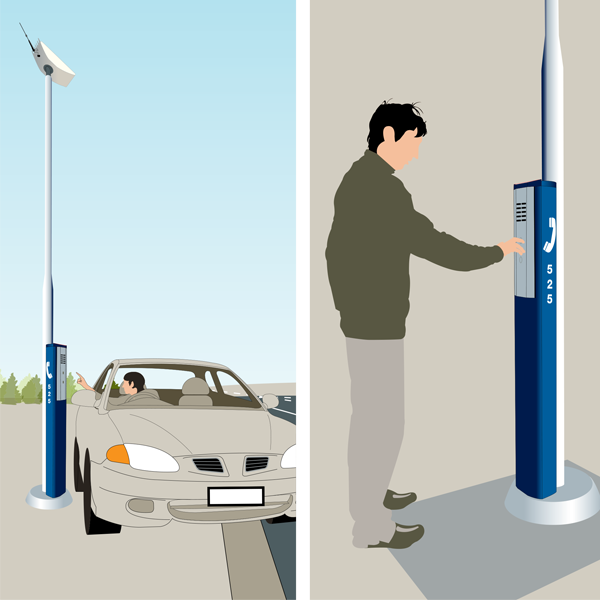The modern help phone should not be restricted for maximum use by its surroundings and have facilities for remote operation testing and functionality changes, as well as flexibility for network connections and powering options.
In times of an emergency a help phone must be simple to use as unrestrictive as possible. A hands-free phone only needs the user to press a button once, it is easier to press a button than to hold onto a handset.
The user needs feedback that the phone is connecting them. A push button with travel will let them know so they know it has been pressed. Both visual and audible feedback is important to indicate that a call has been placed. A delay in any feedback would appear as an eternity in an emergency situation.
Hands-free phones are not as susceptible to vandalism and therefore are more available to those in need. Together with detection and automatic reporting of accidental damage or vandalism (such as damage by a vehicle or vandals) will maximise availability.
A hands-free help phone powered by solar and connected through GSM will be a higher initial investment but should prove the lowest in lifecycle costs whilst providing the upmost usability and flexibility for those who will rely on it.





